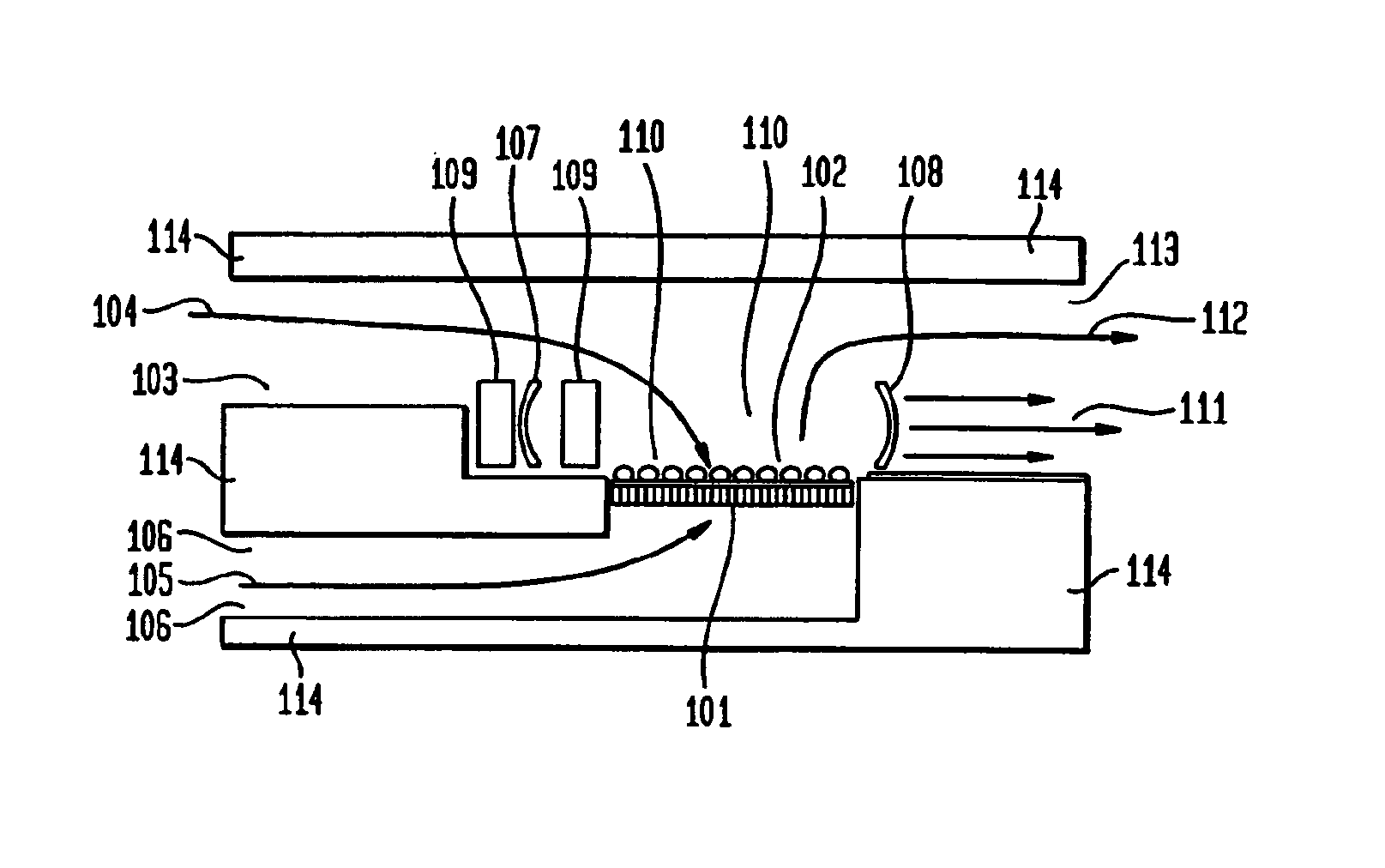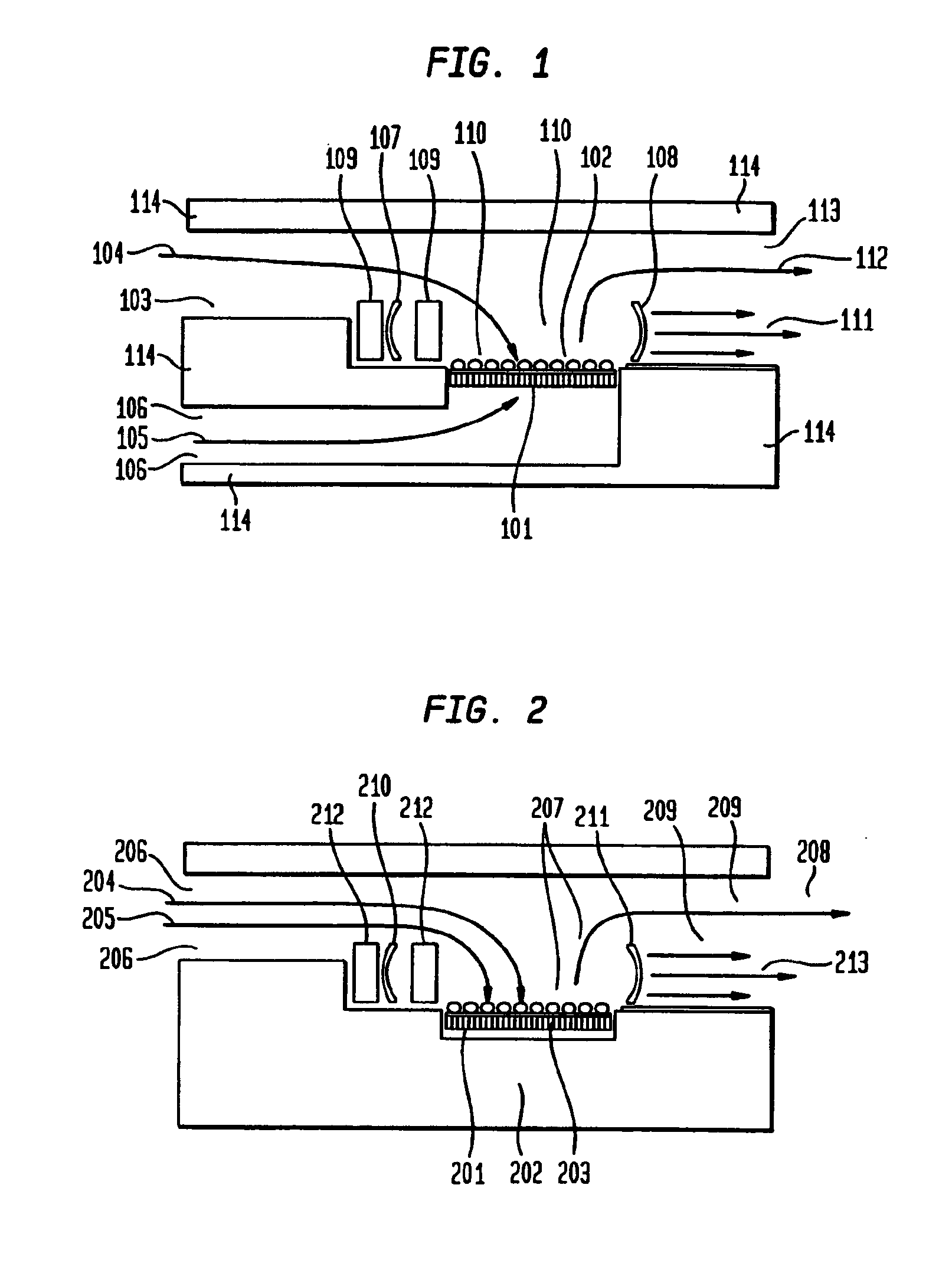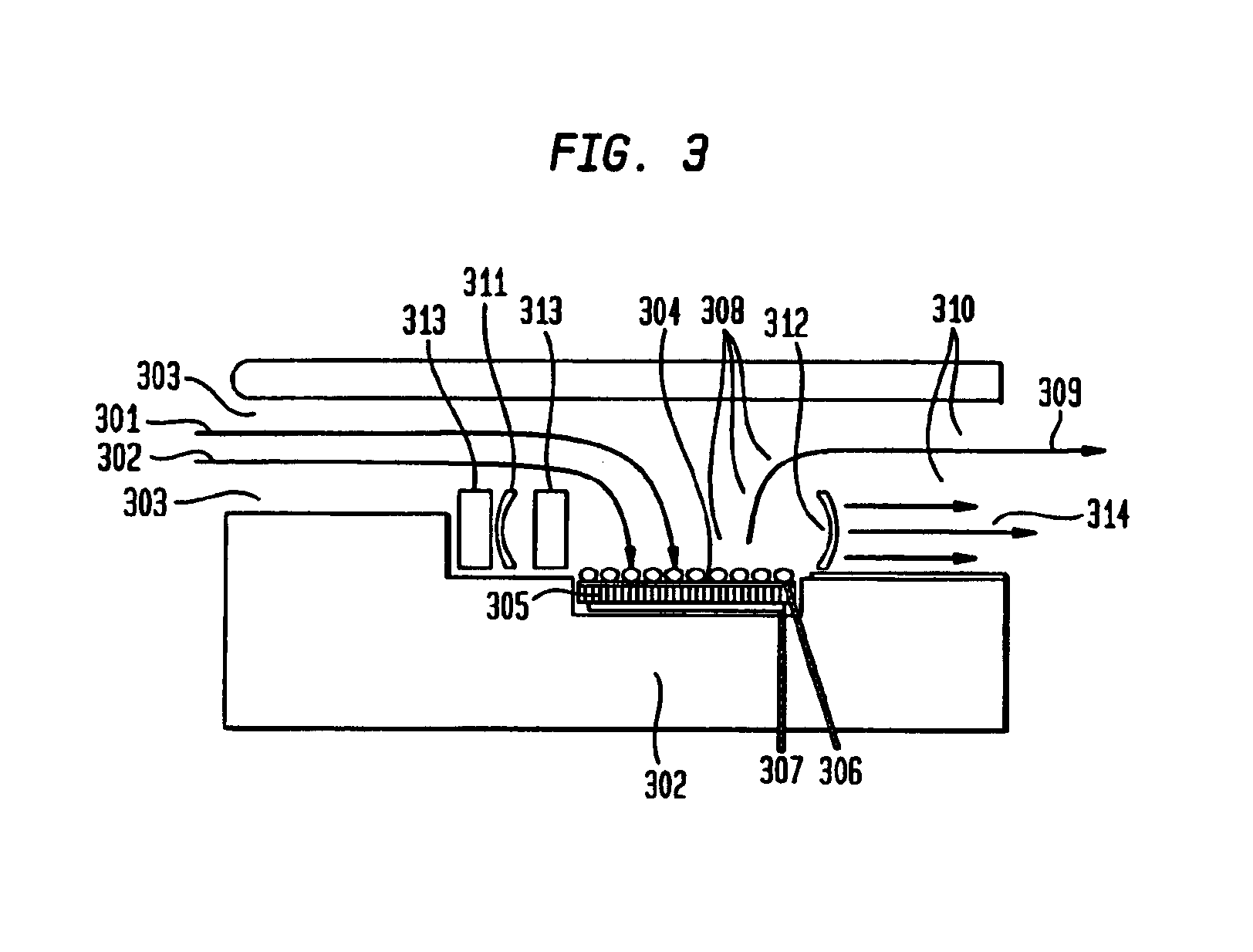Surface catalyst infra red laser
- Summary
- Abstract
- Description
- Claims
- Application Information
AI Technical Summary
Benefits of technology
Problems solved by technology
Method used
Image
Examples
Embodiment Construction
[0028]The present invention is directed to biasing the reactions occurring on the surface of a catalyst toward those that deliver a substantial fraction of the energy into product species that exhibit, as a result of the methods of this invention, a population inversion.
[0029]Stretched molecules associated with adsorption and desorbtion have closely related, reversible effects, both related to population inversion. A method of the present invention in one embodiment uses the hot atoms created upon dissociative chemisorption reacting with a fuel-rich catalyst surface; in another embodiment, a method in the present invention uses stretched molecules produced during associative desorbtion from a catalyst surface; in yet another embodiment, the method of the present invention uses excited state simple products either desorbing from catalyst surfaces or vibrating on those surfaces for a usefully long time; all methods being capable of producing reaction products with population inversion...
PUM
| Property | Measurement | Unit |
|---|---|---|
| Thickness | aaaaa | aaaaa |
| Ratio | aaaaa | aaaaa |
| Electrical conductor | aaaaa | aaaaa |
Abstract
Description
Claims
Application Information
 Login to View More
Login to View More - R&D
- Intellectual Property
- Life Sciences
- Materials
- Tech Scout
- Unparalleled Data Quality
- Higher Quality Content
- 60% Fewer Hallucinations
Browse by: Latest US Patents, China's latest patents, Technical Efficacy Thesaurus, Application Domain, Technology Topic, Popular Technical Reports.
© 2025 PatSnap. All rights reserved.Legal|Privacy policy|Modern Slavery Act Transparency Statement|Sitemap|About US| Contact US: help@patsnap.com



